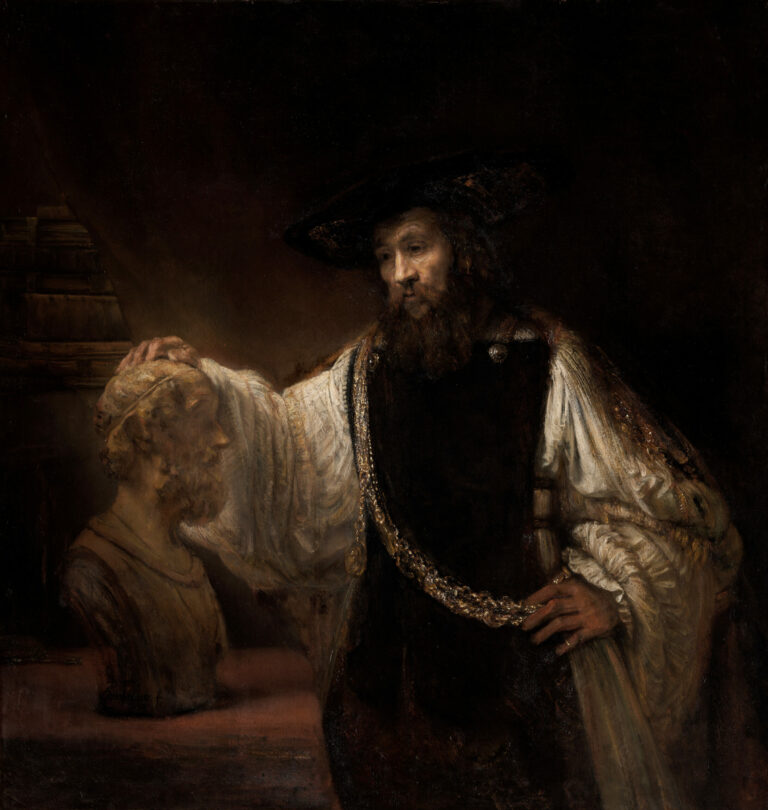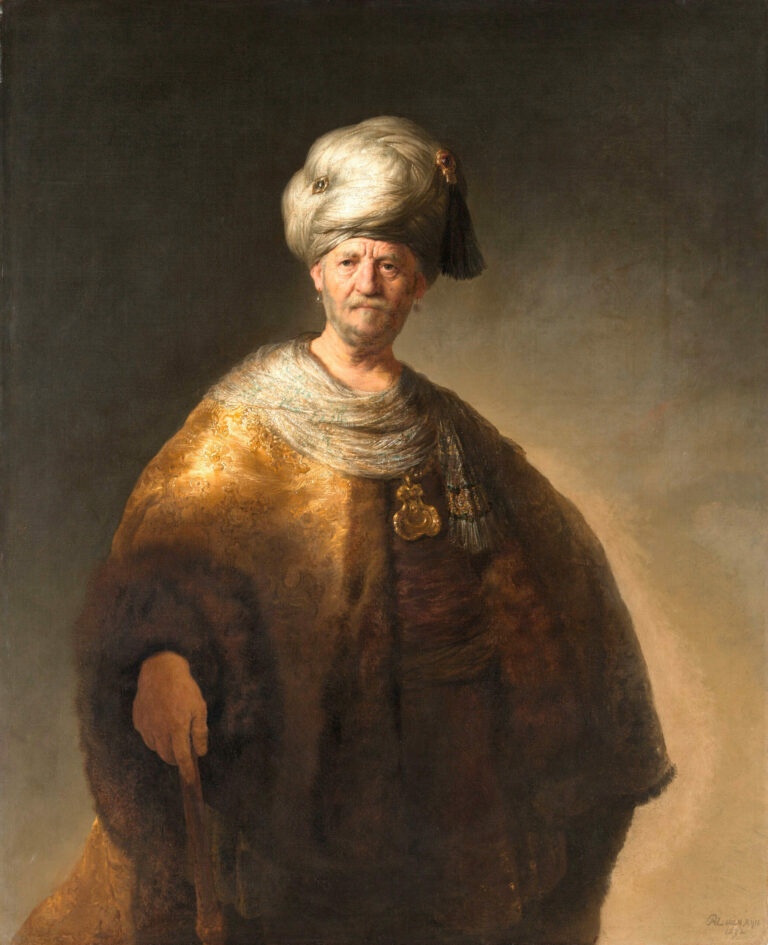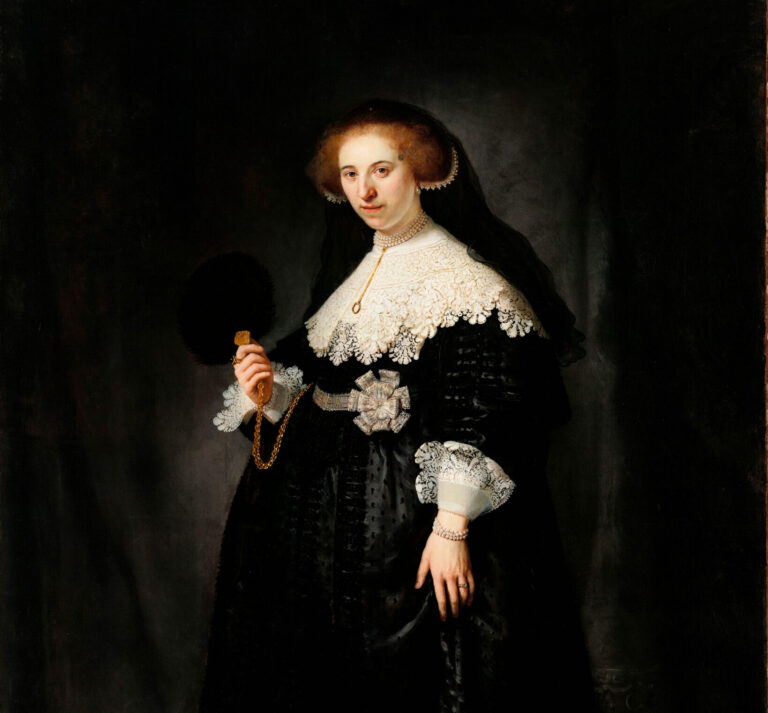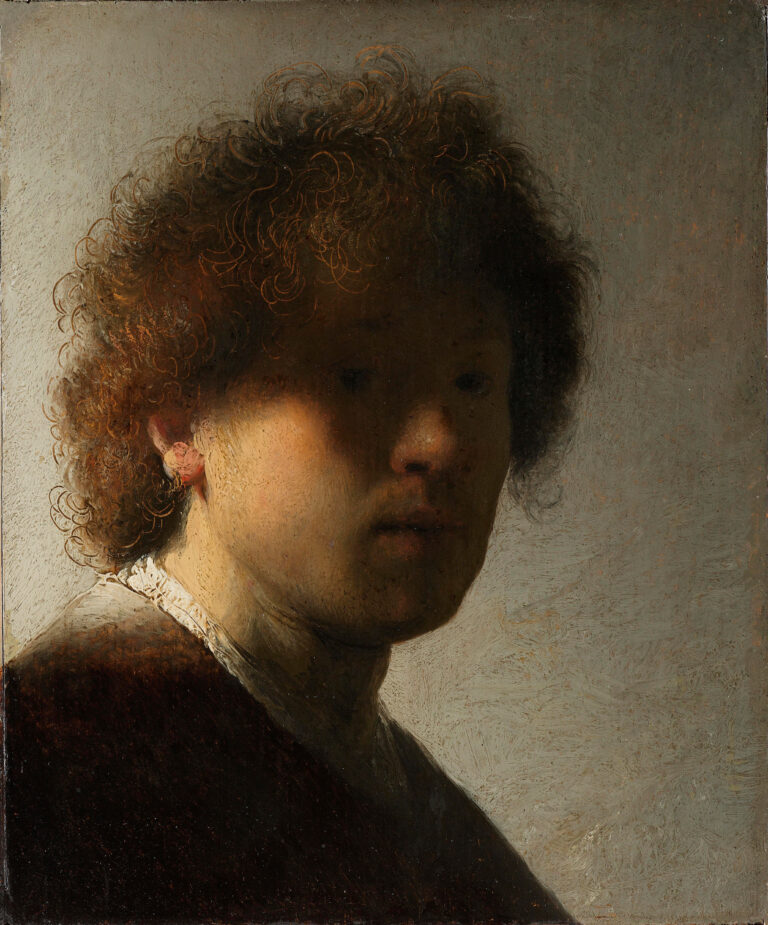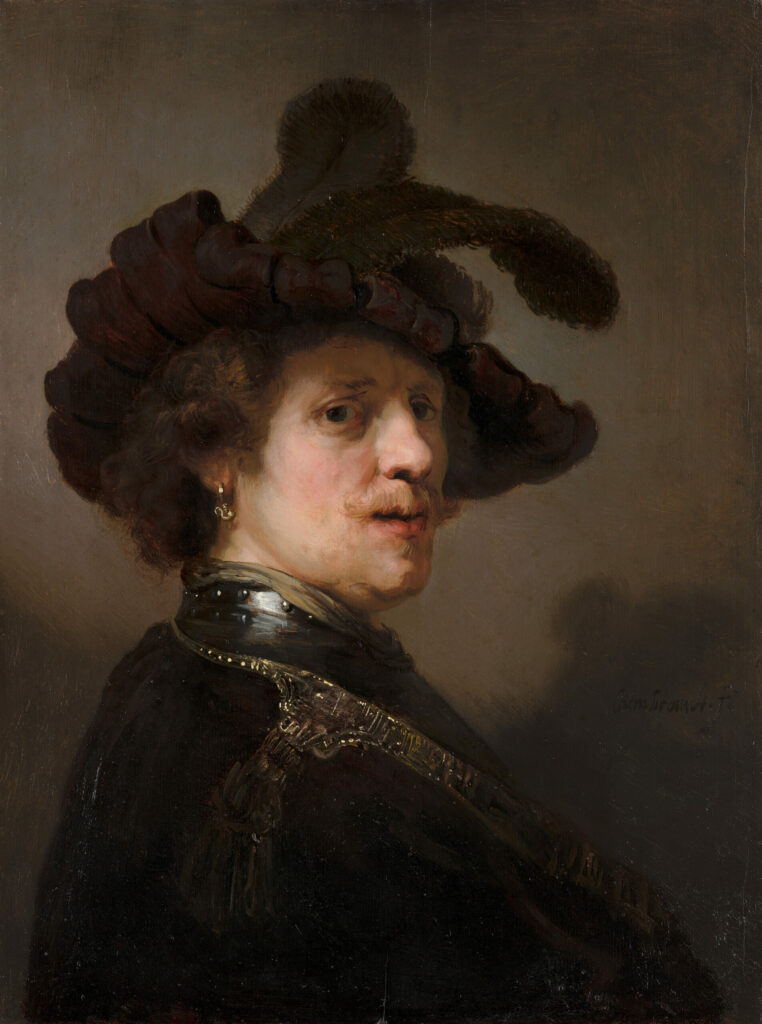
Rembrandt’s art is expressed in this “Tronie” of a man in a feathered beret with theatrical splendor!
The word “tronie” comes from 17th-century Dutch and means “face” – it is a stylistic exercise where expression takes precedence over identity.
The warrior with his magnetic gaze addresses us with a glance over his shoulder, as if caught in the intimacy of his thoughts. The master of Amsterdam displays his virtuosity here. Observe this golden light that caresses this weathered figure, makes the metallic gorget sparkle, and reveals every detail of the sumptuous plumed beret. The gold-embroidered cape completes this staging of a soldier from bygone days, a romantic figure emerging from a baroque dream. The artist no longer signs with his full name but with his first name alone, Rembrandt, a mark of absolute artistic confidence. This work crystallizes the very essence of his genius: transforming a simple exercise in light into a meditation on humanity.
Further information
- “Tronie” of a Man in a Feathered Beret, by Rembrandt, c. 1635-1640
- 62.5 x 47 cm
- Mauritshuis, The Hague, displayed in room 9
- https://www.mauritshuis.nl/en/our-collection/artworks/149-tronie-of-a-man-with-a-feathered-beret
Rembrandt Harmenszoon van Rijn (1606-1669) remains one of the most fascinating figures in Western art. Born in Leiden, he abandoned university to devote himself to art. Established in Amsterdam from 1631, he achieved great success, notably through his marriage to Saskia van Uylenburgh, which opened the doors of high society to him. This undisputed master of the Dutch Golden Age revolutionized painting through his unequaled mastery of chiaroscuro and his ability to probe the human soul. A sought-after portraitist and accomplished history painter, he also excelled in these “tronies” which allowed him to freely explore plays of light and expression. His style evolved toward increasing freedom, gradually abandoning conventions for a more personal and introspective approach to pictorial art.

